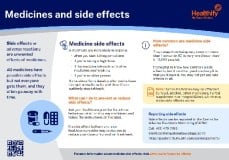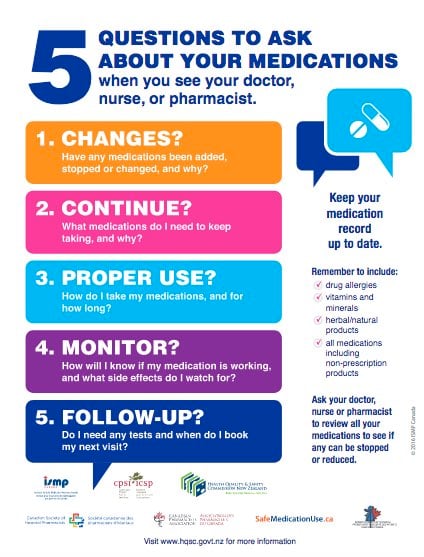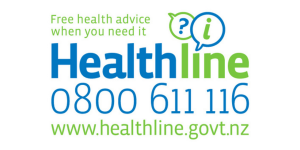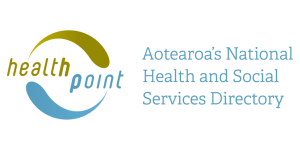Rizatriptan
Sounds like 'ri-zah-trip-tan'
Key points about rizatriptan
- Rizatriptan is used to ease the symptoms of migraines.
- Rizatriptan is also called Rizamelt®.
- Find out how to take it safely and possible side effects.

Rizatriptan is used to ease the symptoms of migraine headaches. It works by releasing a chemical called serotonin, which causes the blood vessels around your brain to contract (narrow). This reverses the dilating (widening) of blood vessels that are believed to be part of the headache process.
Rizatriptan only works when a migraine attack has already begun. It won't prevent a migraine. Don't take it before your headache begins, or during the aura phase, as it may be less effective. Read more about migraine headaches.
Rizatriptan belongs to a group of medicines called triptans.
In Aotearoa New Zealand, rizatriptan is available as tablets (10 mg). The tablet dissolves when you place it on your tongue. It may be useful if you find drinking water difficult during a migraine or you can't swallow tablets. It isn't useful if you're vomiting.
Always use rizatriptan tablets exactly as your healthcare provider has told you. The pharmacy label on your medicine will tell you how much to use, how often to use it and any special instructions. Here is some guidance:
- In adults, the usual dose is 1 tablet (10 mg) at the start of the migraine attack. Rizatriptan should work within 30 minutes.
- If your migraine improves but then comes back, wait at least 2 hours before taking another tablet (10 mg).
- Don't take more than 3 tablets (30 mg) in 24 hours. If your symptoms haven't improved, contact your healthcare provider before taking any more tablets.
- If the first rizatriptan tablet doesn't relieve your symptoms or help your migraine, don't take another rizatriptan tablet for the same attack. It's unlikely to work.
Monthly limit
Don't use rizatriptan for more than 9 days per month. Using rizatriptan too frequently can cause medication-overuse headache or rebound headache. This headache is caused by overuse of painkillers to treat headache, including the use of triptans for migraine. The symptoms include a tension-type headache or migraine-like attack.
Headaches often improve within 7 to 10 days after rizatriptan has been stopped. Symptoms may be worse before an improvement is seen.
Read more about medication-overuse headache.
If you need to regularly use rizatriptan more than 2 times a week talk to your healthcare provider. There are other medicines that can be taken every day to prevent migraines. Read more about medicines to prevent migraines.
How to take rizatriptan
- Timing: It's best to take rizatriptan as soon as you notice headache symptoms, but you can take it after a migraine has already begun.
- Rizatriptan usually starts to work within 30 minutes of taking the tablet.
- Open the packet with dry hands. Place the rizatriptan tablet on your tongue and allow it to dissolve then swallow with saliva. You don't need to drink water to take your rizatriptan tablet. It's only absorbed after swallowing.
- Food: Rizatriptan can be taken with or without food.
Here are some things to know when you're taking rizatriptan tablets. Other things may be important as well, so ask your healthcare provider what you should know about.
- Other medicines: Rizatriptan interacts with some medicines, herbal supplements and rongoā Māori, so check with your healthcare provider or pharmacist before starting rizatriptan and before starting any new products.
- Driving: Rizatriptan and/or migraines can make you feel tired or dizzy. Be careful when driving or using tools until you know how this medicine affects you.
- Alcohol: Limit or avoid drinking alcohol while taking rizatriptan.
- Pregnancy or breastfeeding: Talk to your healthcare provider if you're pregnant, planning a pregnancy or want to breastfeed.
- Don't give rizatriptan to anyone else even if they also have migraines.
Like all medicines, rizatriptan can cause side effects, although not everyone gets them. If you're concerned about any symptoms you think might be related to your medicine, talk to your healthcare provider. The following information offers some guidance but doesn't include all possible side effects.
Common side effects
Tell your healthcare provider if these side effects bother you.
- Feeling sleepy, tired or dizzy: Be careful when driving or using tools until you know how this medicine affects you. Don’t drink alcohol.
- Nausea (feeling sick) or vomiting (being sick): This may be due to the migraine attack. Avoid eating until this feeling passes.
Tell your healthcare provider immediately or phone Healthline free on 0800 611 116 if these occur
- Intense or ongoing pain, or tightness in your chest, jaw or throat.
- Signs of serotonin syndrome such as feeling agitated and restless, heavy sweating, shivering, fast heart rate or irregular heartbeat, headache, diarrhoea and rigid or twitching muscles.
Phone 111 for an ambulance or go to your nearest accident and emergency (A&E) clinic if these occur
- Signs of an allergic reaction such as itchy skin, and rash, swollen lips or tongue, problems breathing, like a tight chest or shortness of breath.
Read more about medicines and side effects and reporting a reaction you think might be a side effect.
The following links provide further information on rizatriptan:
Rizamelt®(external link) Medsafe Consumer Medicine Information, NZ
Rizatriptan(external link) New Zealand Formulary Patient Information
Brochures
Medicines and side effects(external link) Healthify He Puna Waiora, NZ, 2024
5 questions to ask about your medications (external link)Health Quality and Safety Commission, NZ, 2019 English(external link), te reo Māori(external link)
References
- Treatment of acute migraine(external link) New Zealand Formulary
- Rizatriptan(external link) New Zealand Formulary
- Rizamelt(external link) Medsafe datasheet, NZ
- Diagnosing and managing headache in adults in primary care(external link) BPAC, NZ, 2017
Brochures

Medicines and side effects
Healthify He Puna Waiora, NZ, 2024

Health Quality and Safety Commission, NZ, 2019 English, te reo Māori
Credits: Healthify editorial team. Healthify is brought to you by Health Navigator Charitable Trust.
Reviewed by: Stephanie Yee, Pharmacist, Auckland.
Last reviewed:





